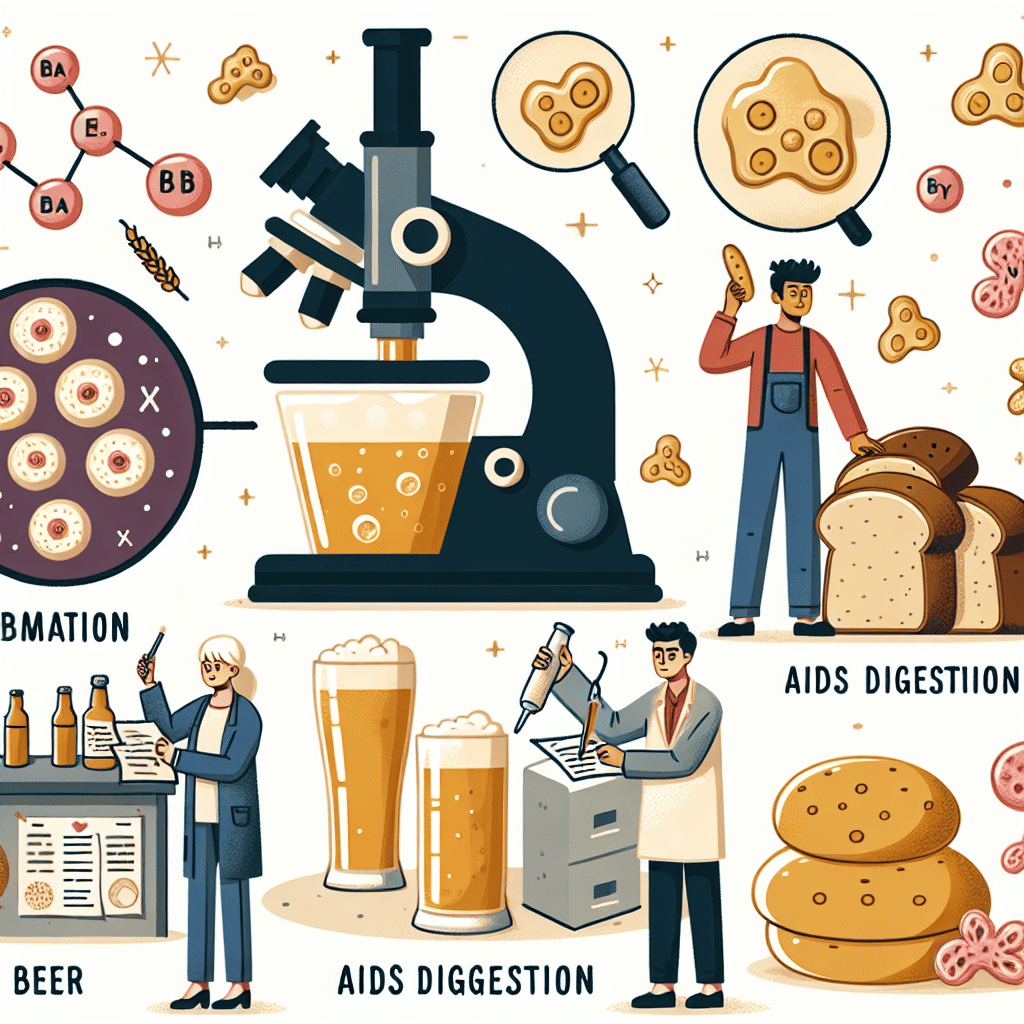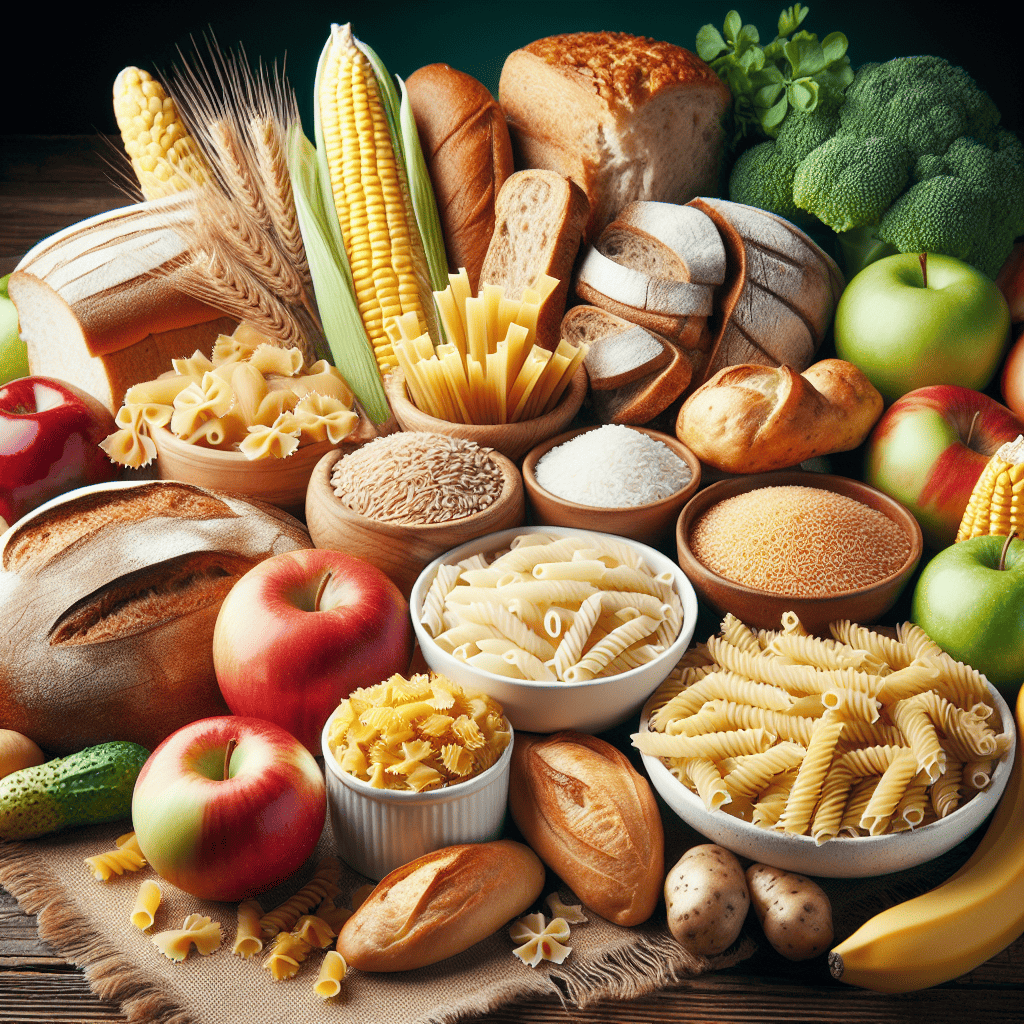Introduction: Yeast consumption on an empty stomach is a common practice with perceived benefits, but scientific evidence supporting these claims is limited. This blog post delves into the potential advantages, forms, possible side effects, and precautions associated with consuming yeast on an empty stomach to provide insights for readers.
Table of Contents
The Benefits of Yeast on an Empty Stomach
This section explores the potential advantages of consuming yeast on an empty stomach.
- Weight Management:
Yeast can be a helpful addition to a weight loss journey due to its chromium content and fiber richness. Chromium is a mineral that plays a role in regulating blood sugar levels and may help control cravings and reduce hunger, which can be beneficial for weight management. Additionally, the fiber present in yeast can contribute to promoting a feeling of fullness and satiety, which can aid in controlling portion sizes and overall calorie intake. By including yeast in the diet, individuals may find it easier to maintain a healthy weight and support their weight loss goals.
Moreover, incorporating yeast into meals can offer a nutritionally dense and low-calorie option. This can be especially advantageous for individuals aiming to lose weight, as it allows them to consume a nutrient-rich food that is filling and satisfying without significantly adding to their daily caloric intake. By incorporating yeast into recipes such as bread, soups, or smoothies, individuals can benefit from its weight management properties while enjoying flavorful and diverse meals. This can help prevent feelings of deprivation often associated with weight loss diets, making it easier to stick to a healthy eating plan over the long term.
In addition to its weight management benefits, yeast also provides essential nutrients that are important for overall health. For example, yeast is a good source of B vitamins, such as B6 and B12, which play a crucial role in energy metabolism and the functioning of the nervous system. These vitamins are essential for converting food into energy and supporting cognitive function, which can be particularly beneficial for individuals following a weight loss regimen that may require increased physical and mental energy. Thus, by including yeast in their diet, individuals not only support their weight loss goals but also promote their overall health and well-being.
- Healthy Hair and Skin:
Yeast consumption has long been recognized for its potential benefits in maintaining healthy hair and skin. Yeast is rich in B complex vitamins such as Biotin (B7) and Niacin (B3), which are essential for promoting overall skin health. Biotin, in particular, is known for its role in strengthening hair and nails, while Niacin helps improve the skin’s overall texture and tone. These vitamins support the body’s natural processes that contribute to healthy skin and hair, such as cell regeneration and repair, as well as the production of fatty acids essential for skin health.
In addition to B complex vitamins, yeast is also a source of other key nutrients like zinc and selenium, which are beneficial for skin health. Zinc has been linked to reducing inflammation and may help in the treatment of acne. Selenium is an antioxidant that helps protect the skin from damage caused by free radicals and UV exposure. Including yeast in your diet can provide these essential nutrients that support skin health and may help in reducing skin issues like acne.
Overall, incorporating yeast into your diet can be a beneficial addition for maintaining healthy skin and hair. The B complex vitamins, along with other essential nutrients found in yeast, play a crucial role in supporting skin health by promoting cell renewal, repairing damage, and protecting against oxidative stress. While individual results may vary, regular consumption of yeast as part of a well-rounded diet can contribute to healthier skin, stronger hair, and potentially reducing skin concerns such as acne. It’s important to consult with a healthcare professional or a nutritionist before making significant changes to your diet to ensure it aligns with your individual health needs.
Forms of Yeast
This section explores the various forms in which yeast can be consumed.
- Yeast Forms:
Yeast is a versatile source of nutrition that can be consumed in various forms. One common form is yeast pills, which are popular dietary supplements. These pills typically contain concentrated amounts of yeast and can be easy and convenient to take. They are often taken for their potential health benefits, such as improving digestion and boosting the immune system. Yeast pills are usually available in health food stores and pharmacies, making them easily accessible to consumers. It is important to follow the recommended dosage when taking yeast pills as excessive consumption may lead to unwanted side effects.
Another form in which yeast can be consumed is in powder form. Yeast powder is a versatile ingredient that can be added to a variety of beverages and foods, such as smoothies, soups, and baked goods. This form of yeast is rich in nutrients and can provide a savory flavor to dishes. Yeast powder is a popular choice for individuals looking to incorporate more nutrients into their diet in a convenient way. It is important to note that not all yeast powders are the same, so it is crucial to read the labels and choose a high-quality product. Additionally, individuals with yeast allergies should avoid consuming yeast powder to prevent adverse reactions.
Understanding the different forms in which yeast can be consumed allows individuals to select the most suitable option based on their preferences and dietary needs. Whether choosing yeast pills for their convenience and potential health benefits, or yeast powder for its versatility in cooking and baking, individuals have the flexibility to incorporate this nutritious ingredient into their daily routine. Consulting with a healthcare provider or nutritionist can also provide guidance on the best form of yeast consumption based on individual health goals and dietary restrictions. Ultimately, incorporating yeast into one’s diet can contribute to a well-rounded and nutritious eating plan.
Side Effects of Drinking Yeast
This section discusses potential side effects associated with consuming yeast.
- Minor Side Effects:
Yeast consumption, although generally safe for most people, can lead to some minor side effects such as excess gas, bloating, and headaches that resemble migraines. Excess gas and bloating are common issues that may arise due to the fermentation process of yeast in the digestive system. This fermentation can produce gas, leading to discomfort and bloating in some individuals. Additionally, headaches resembling migraines may occur in some people after consuming yeast. These headaches can range from mild to severe and may be accompanied by other migraine symptoms such as sensitivity to light and sound.
Being aware of these minor side effects of yeast consumption is key to helping individuals better manage their intake. By recognizing the connection between consuming yeast and experiencing symptoms like excess gas, bloating, and migraines, individuals can make informed choices about their diet. Keeping a food diary can be helpful in tracking yeast consumption and any associated side effects, allowing for easier identification of potential triggers. Furthermore, it may be beneficial for individuals experiencing these side effects to consult a healthcare professional for personalized advice and support in managing their symptoms.
In some cases, individuals with sensitivities or allergies to yeast may experience more severe reactions beyond the minor side effects mentioned. These reactions can include skin rashes, itching, or breathing difficulties and may require immediate medical attention. It is important for those with known sensitivities to yeast to carefully read food labels and avoid products that contain yeast or yeast extracts. Understanding one’s own body and reactions to yeast consumption is crucial in maintaining overall health and well-being, and seeking guidance from healthcare providers can offer further support in managing any adverse effects.
- Allergic Reactions:
Allergic reactions to yeast can trigger a range of serious symptoms that can be alarming and require immediate medical attention. When someone is allergic to yeast, encountering even small amounts can lead to severe reactions. Apart from the more common symptoms like itching, redness, or swelling, some individuals may experience more severe reactions such as chest pain, chest tightness, and throat tightness. These symptoms could indicate an escalating allergic response that may affect the airways and lead to breathing difficulties.
When an allergic reaction progresses to include symptoms like chest pain, chest or throat tightness, and breathing difficulties, it is crucial to seek medical help without delay. These symptoms could be indicative of anaphylaxis, a severe and potentially life-threatening allergic reaction that requires immediate treatment. Anaphylaxis can rapidly escalate, causing a drop in blood pressure, loss of consciousness, or even cardiac arrest. Prompt administration of epinephrine is often necessary to reverse the symptoms and stabilize the individual.
It is important for individuals with a known yeast allergy to be vigilant and proactive in managing their condition. Avoiding foods and products that contain yeast is essential to prevent allergic reactions. Additionally, informing healthcare providers, friends, and family members about the allergy can help ensure a quick response in case of an emergency. Carrying an epinephrine auto-injector and knowing how to use it is also recommended for those at risk of severe allergic reactions. By taking these preventive measures and being prepared for emergencies, individuals with a yeast allergy can minimize the risk of experiencing serious symptoms like chest pain, chest or throat tightness, and breathing difficulties.
The Dangers of Using Yeast
This section outlines precautions and potential dangers associated with yeast consumption.
- Precautions:
Yeast is a common ingredient in many food products and is often used in the process of fermentation to achieve a desired texture, taste, or rise in baked goods. However, certain groups of people need to exercise caution when consuming yeast due to the potential risks it may pose. Pregnant or breastfeeding women, for example, should be wary of consuming yeast as it may result in complications. The high levels of yeast in certain food products could potentially lead to yeast infections, which could be harmful for both the mother and the baby. It’s advisable for pregnant or breastfeeding women to consult healthcare professionals before incorporating yeast into their diets.
Individuals with Crohn’s disease should also be cautious when using yeast. Crohn’s disease is a chronic inflammatory condition of the gastrointestinal tract, and certain food products containing yeast may exacerbate the symptoms of the disease. Yeast can sometimes trigger or worsen inflammation, leading to discomfort and potential complications for individuals with Crohn’s disease. It’s essential for individuals with Crohn’s disease to pay close attention to their diet and consult with healthcare providers or nutritionists to determine if yeast consumption is safe for them.
Furthermore, individuals with weakened immune systems need to be mindful of using yeast as well. Yeast, when consumed in large quantities or in certain forms, can potentially increase the risk of infections in individuals with compromised immune systems. These individuals already have a reduced ability to fight off infections, and introducing yeast into their diets without caution could further compromise their health. It’s crucial for individuals with weakened immune systems to seek advice from healthcare professionals before using yeast or yeast-containing products to minimize any potential risks to their health.




